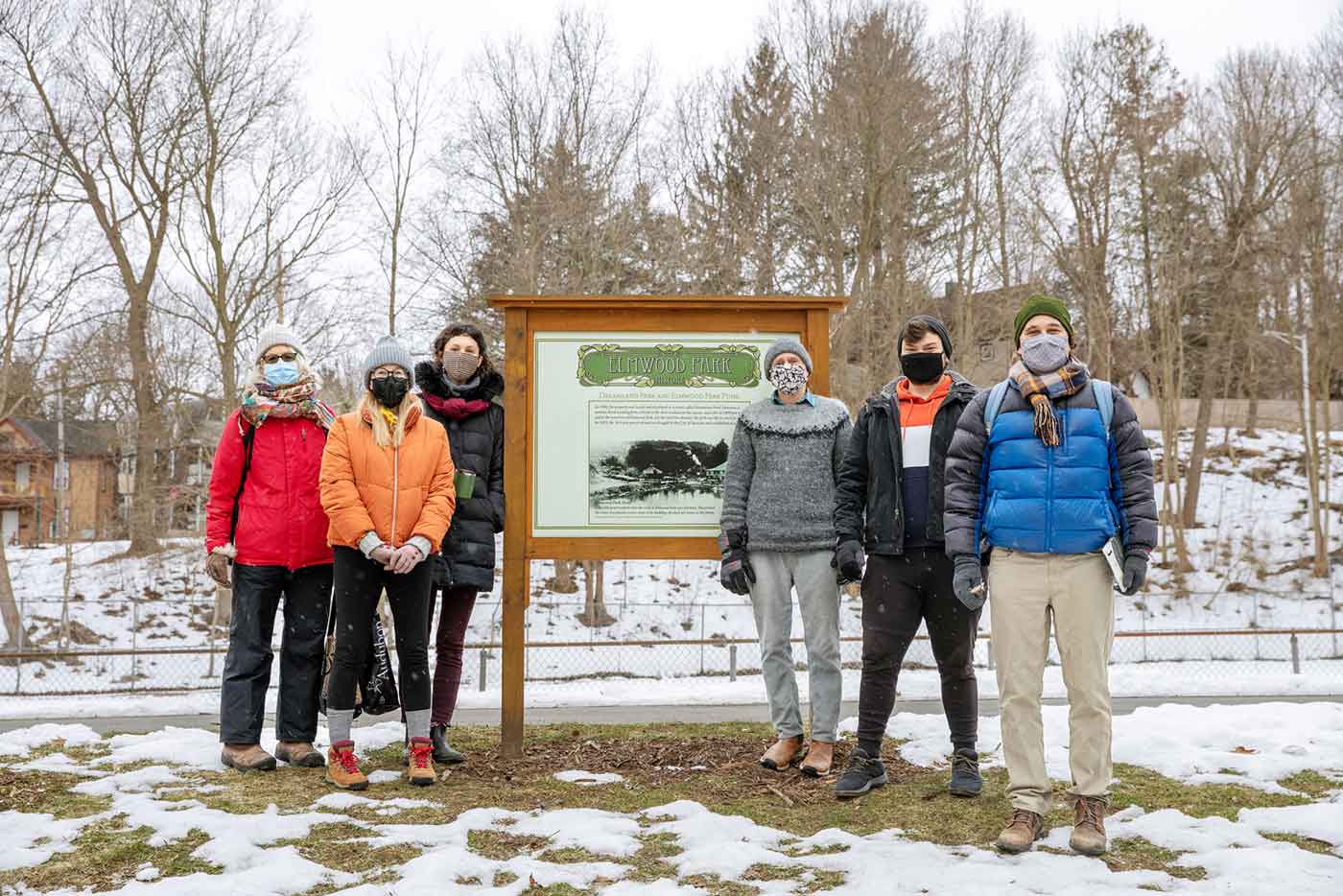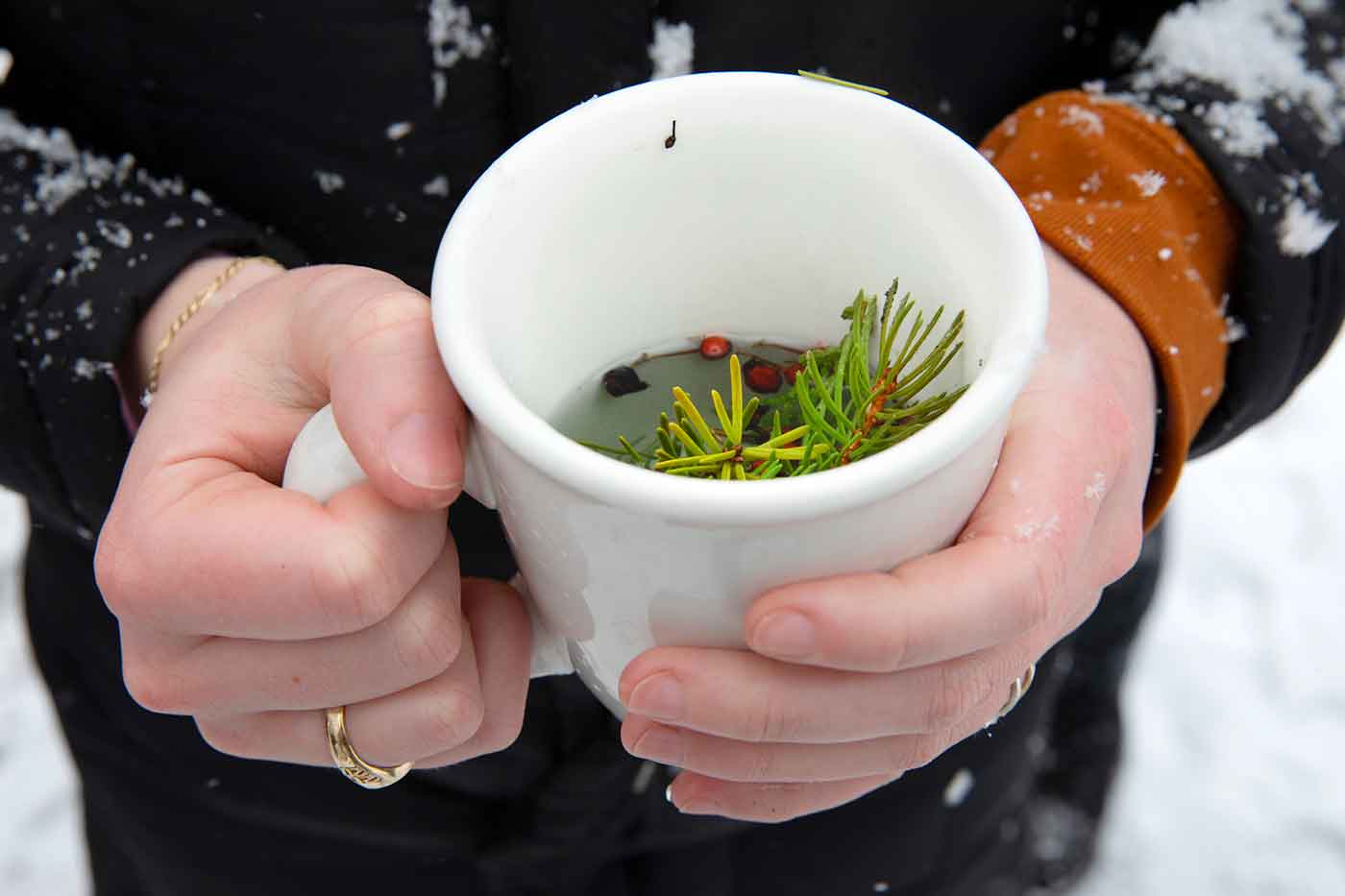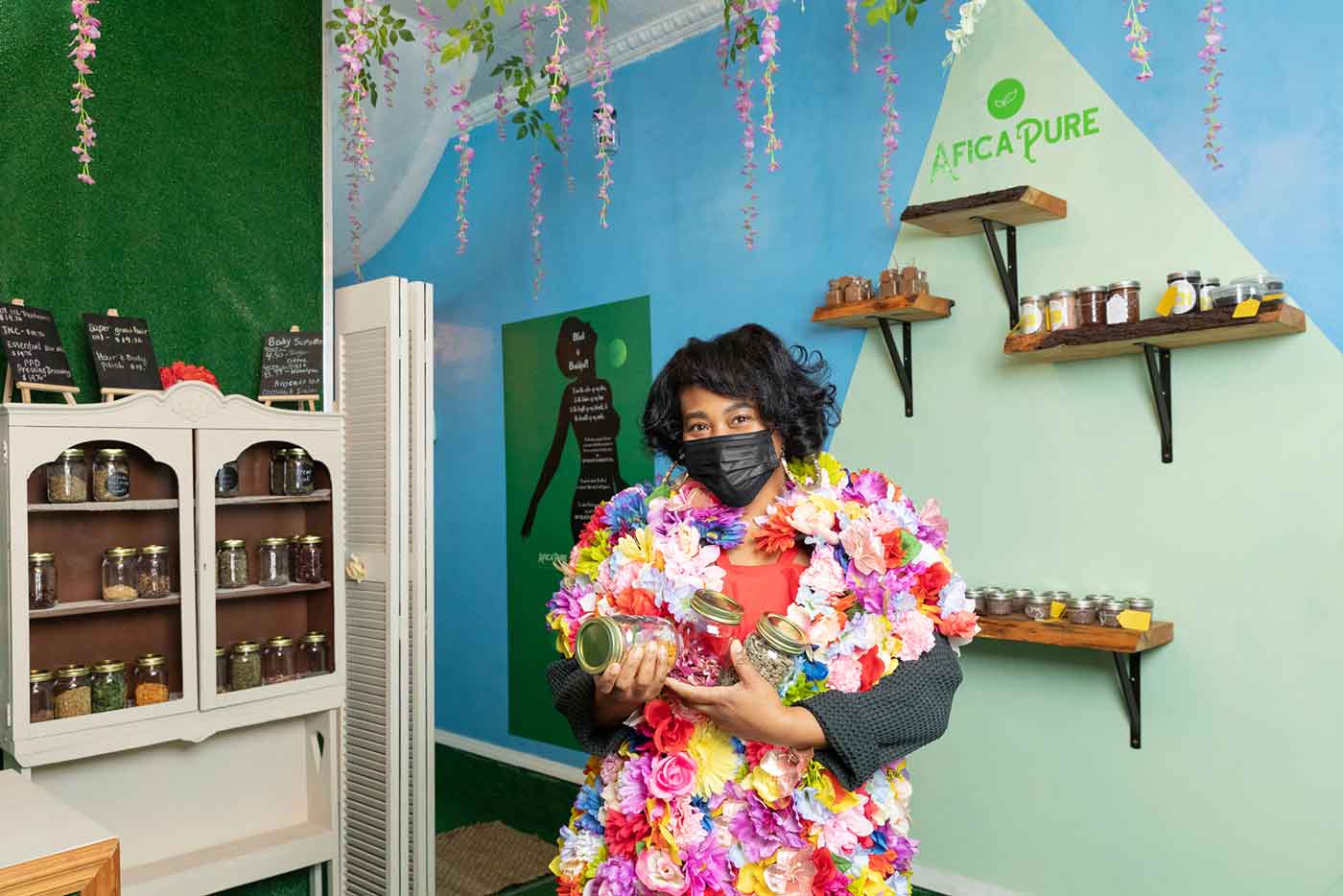Prospective students in search of an interesting college major might come across “food studies” and imagine an appealing mix of skills that could lead to a career as a chef, nutritionist or cooking show host. But food studies is actually something quite different. It is one of the fastest-growing fields of study in North America, preparing students for careers in policy analysis, research, marketing, community outreach and more. Syracuse University’s Falk College has taken food studies to new levels of relevance, encompassing everything from food delivery systems to social justice, public health and policy, landscape sustainability, urban design, and human rights.
These days, you’re likely to find food studies students scouring parks and forests for edible plants, accompanied by student researchers from a variety of other disciplines. They are all part of the Syracuse Urban Food Forest Project (SUFFP), an interdisciplinary research initiative between Syracuse University and the State University of New York College of Environmental Science and Forestry (ESF).
Led by Falk College food studies professor Anne Bellows and ESF professors Stewart Diemont (environmental biology) and Matthew Potteiger (landscape architecture), the two-year undertaking examines the connections between ecological and human systems in the urban forests along the City of Syracuse’s southwest side. Poverty, food insecurity and chronic health issues are prevalent along this corridor, but the wooded areas there contain a surprising number of edible plants that can be harvested for human consumption and other purposes.

“This is a project that is about making connections—across the disciplines of ecology, food studies, design, traditional environmental knowledge—and the very fundamental connections between people, food and place,” Potteiger says. “It has opened up opportunities for students from these different fields to collaborate and engage directly with communities.”
The pilot project will assess the existing and potential ecological productivity and community engagement around managing and harvesting edible plants. The team is developing designs for how to increase the availability of wild edible plants as well as shared foraging knowledge about them and public access to them. A longer-term goal is to have connected “edible ecosystems” across Syracuse to benefit city residents, plants, animals and landscapes.
“Interdisciplinary and multi-institutional collaborations are key to resolving societal challenges such as food insecurity, environment and global climate change,” says Interim Vice Chancellor and Provost John Liu. “The collaboration here between Syracuse University and ESF researchers is an excellent example of working together to generate synergy.”
Foraging for Answers

The group’s research seeks to answer a number of questions. What are the best (and worst) practices to employ when managing urban food forests, and to what extent should the community be involved? What funding is necessary to maintain the forests over time? And what lessons can be learned from the urban food forest in Syracuse? The challenges include water access, invasive species, vandalism, contamination and funding, to name a few.
Seed funding from a Syracuse University Collaboration for Unprecedented Success and Excellence (CUSE) grant and an ESF McIntire-Stennis research grant made it possible for the faculty to build interdisciplinary teams to advance their research.
Additional funding came from the Syracuse University Office for Undergraduate Research and Creative Engagement (SOURCE). The SOURCE provides grants of up to $5,000 to fund projects designed and implemented by undergraduate students guided by faculty mentors. This year, the SOURCE has also allocated funds for a pilot faculty research assistant grant for faculty mentors to hire undergraduates for remote work that supports their ongoing research. This enabled Bellows to hire food studies students to work as research assistants for the project.
“Including undergraduate and graduate students brings enthusiasm and energy that goes beyond completing assigned tasks and pushes the project beyond our field of vision,” Bellows says. “They tie the field work into their diverse curricula and seamlessly incorporate classroom, research and service in their SUFFP engagement.”
Student Engagement and Research
One research assistant is Lisa Bush ’21, a senior from Canton, Connecticut. “As a food studies major, the idea of having a food forest in Syracuse is inspiring,” Bush says. “It allows people to source locally grown ingredients for home use, encourages community participation and helps bring food to those who are food insecure. The SUFFP also provides a way for the Syracuse community to utilize locally grown ingredients rather than purchasing from an outside source.”
Bush consolidates information, reviews similar projects in other locales and brainstorms ways to get the community involved in SUFFP through school, community and social media. She believes that her work on the project will resonate long after she graduates. “I’ve come to realize that the collaboration of different minds, schools of thought and backgrounds creates an impactful, quality project,” she says. It has opened her eyes to the amount of work and collaboration a community project like this demands. “It’s been an invaluable experience, and as I move forward in my career, I hope the skills, research methods and thought processes I have gained will be put to good use.”
Briana Okebalama ’22, from Alpharetta, Georgia, is majoring in earth sciences through the College of Arts and Sciences and pursuing an integrated learning major in environment, sustainability and policy through the Maxwell School of Citizenship and Public Affairs. “Learning about the food forest has broadened the scientific knowledge related to my major,” she says. “And connecting with the community as a way to address food insecurity has added to my knowledge about environmental policy.”
Okebalama’s role as a student researcher is to expand community outreach and engagement for the project. Working with community partner Antonisha Owens, she created a newsletter containing information about the project’s history and background on products that can be foraged locally. Also included are photos of food foraging walks, recipes and upcoming SUFFP events.
“Having the opportunity to work within the local community is especially important when you consider the privileged environment we inhabit as students,” Okebalama says. “It’s good to step back with an understanding of and appreciation for the community and use it to benefit that same community. With senior year approaching, I feel this has really helped me progress as a student. I’m gaining excellent skills that will also help me build a resume.”
Grace Taylor, an ESF senior majoring in environmental studies, assists in the project by creating interpretive materials like annotated maps, waysides and workshop plans for foraging. “I’m trying to understand what will appeal to the broader community,” she says. “I want my materials to guide those who were initially interested in the project, but I also want them to be useful for those who stumble upon our foraging sites by chance in the years to come.”
An Unusual Introduction to Syracuse

For Marie Claire Bryant, a graduate student pursuing an M.S. in food studies at Syracuse University, the project has unfolded in unexpected ways. Bryant moved to Syracuse after working on urban agricultural projects in Nashville, Baltimore and Washington, D.C., and she started working on the project at the height of COVID-19 precautions. While no restaurants or other venues were open, she was still able to participate in foraging, which happens in small groups outdoors. “Being introduced to Syracuse through foraging was really exciting as a food studies student,” she says. “We have found so much naturally growing food that we didn’t expect. One time we came across a large patch of water mint and watercress growing together in a stream. A ton of it! The aroma of the mint hit us suddenly and we realized what we had found: fresh, edible greens growing naturally in an urban forest. People need to know that there is food growing right in their neighborhoods.”
The thrill of discovery is only the beginning. “The next step is learning how to responsibly harvest so that the food source doesn’t disappear, which is a major part of what we hope to instill in the entrepreneurs we work with,” Bryant says. The group has also applied for grants to purchase hundreds of trees to be planted by local youth in conjunction with existing youth empowerment organizations. “As a graduate student, my focus is on land governance, foraging on public land, and the laws and social dynamics that challenge growing food and harvesting on cooperatively owned land. My interest in the project has grown immensely since I got involved, and I am so grateful for this experience.”
Growing Community Connections

Antonisha Owens, an entrepreneur who owns a salon on the South Side of Syracuse, joined the project as a community partner. She learned about the SUFFP from Cimone Jordan, a planner for the City of Syracuse Department of Neighborhood and Business Development, and decided to join the group on one of their many foraging walks. “I was amazed at how many of the ingredients I use in my natural products can be found right outside my door,” Owens says.
After learning how to microbraid her own hair when she was 16, Owens quickly developed a following of loyal customers. She earned a cosmetology license and opened AficaPure Artisan and Hair Clinique, a hair salon and boutique where she styles hair, provides beauty treatments and sells her line of homemade natural beauty products—soaps, scrubs, shampoos, conditioners and body oils.
She loves learning to identify and harvest the plants that grow in local forests, like water mint, burdock root, rose hips, wild basil, paw paw fruit, juneberries and many more. “A lot of the ingredients I use in my beauty products are costly because I want the best quality, so it helps to find them in nature for free,” she points out. Someday, Owens hopes to start a small farm where she can grow her own ingredients. “I want to work together with nature to provide cleaner, safer products in an ethical and humane way.”
Food studies professor Anne Bellows has been amazed at the cooperative spirit of the community partners, students and faculty that has made this undertaking flourish. “The Syracuse Urban Food Forest Project has developed, survived, and is blossoming because of a network of actors and interests that sustains us individually and as a group,” she says. “It is in the synergy of the alternate waves of creativity, insight and productivity that we find inspiration in the pure camaraderie and fun of working together.”
~ A Syracuse University Story by Mary Beth Horsington originally published on March 30, 2021
